
|
It's a brilliant universe out there, shimmering with endless lights. The sights of this unending space aren't only epic, but hint at the incredible secrets the universe has in store for the man with the telescope... |
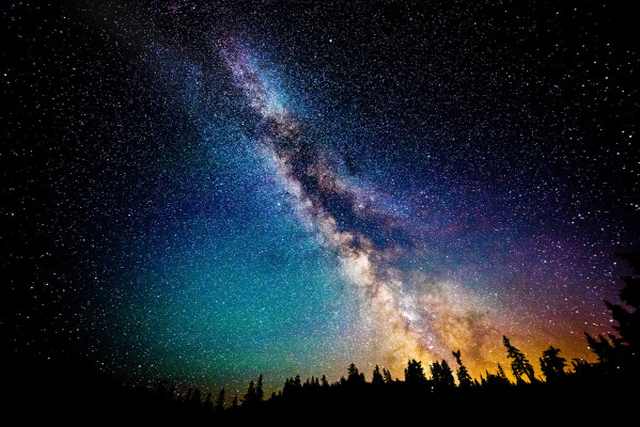 |
| Here's our Milky Way galaxy, contrasted by a night forest skyline. The Milky Way has a disc-like structure and it was first observed by famous astronomer Galileo Galilei. The Milky Way has a diameter of around 110,000 light years, which means even if you were traveling at the speed of light, it would take you about 110,000 years to get from one end to the other! |
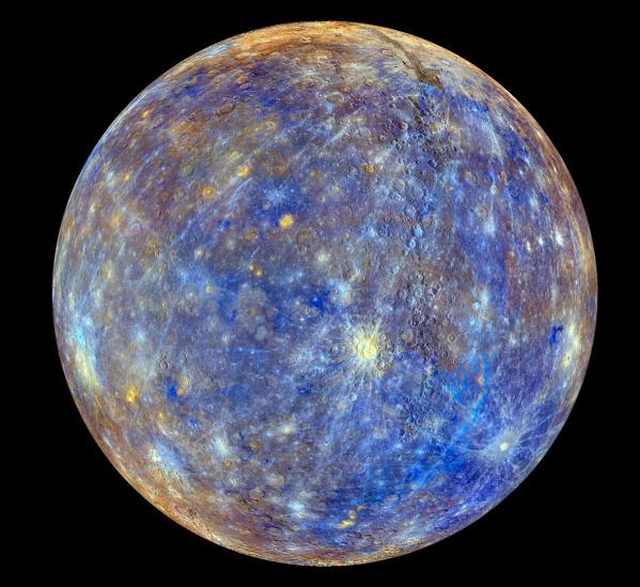 |
| Here we have Mercury, the which is closest to the Sun out of our eight planets (that's right, eight, Pluto is still on time-out.) This image has been filtered to illustrate the rock and mineral makeup of Mercury. Since it's so close to the Sun, the surface temperatures of Mercury can reach around 700 Kelvin, or 800 Fahrenheit! We love the colors and the clarity of this image. |
 |
| Orion is one of the most recognized constellations in the night sky; it can be seen from around the world. In this constellation, you will find an asterism, or group of stars, commonly referred to as Orion's Belt. In the U.S. you are most likely to get a view of Orion's Belt in January around 9 pm. The combinations of color here are really breathtaking, it's hard to believe this kind of beauty is naturally occurring. |
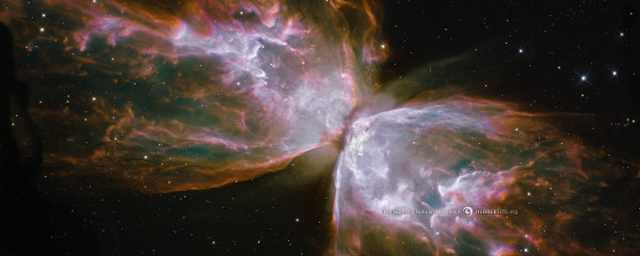 |
| This is the butterfly nebula as photographed by the wide Field Camera 3 aboard the Hubble Telescope. The official name of this nebula is NGC 6302, and it's shape is due to it being a bipolar planetary nebula, but because of it's shape it is nicknamed the butterfly nebula. This nebula was first observed by astronomers way back in 1888. |
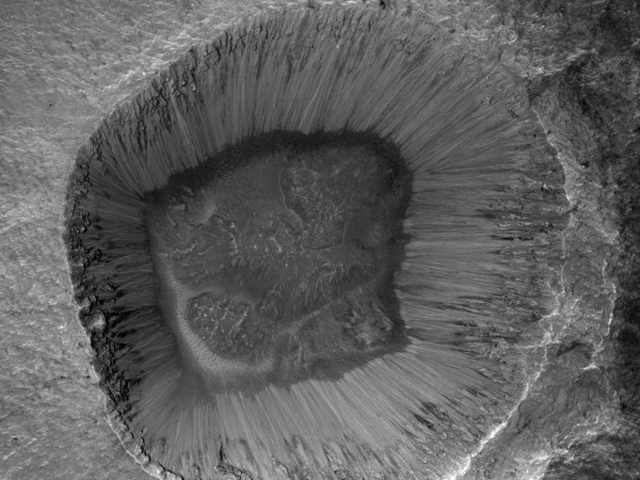 |
| Can you guess the location of this crater? It looks like it could be on the moon, but it's actually on Mars, the fourth planet from the Sun in our solar system. This is considered to be a 'fresh' crater because the rim is still sharp and there isn't much erosion, but it could very well be a thousand years old or more. It's only 'fresh' when compared to the relative lifespan of Mars. |
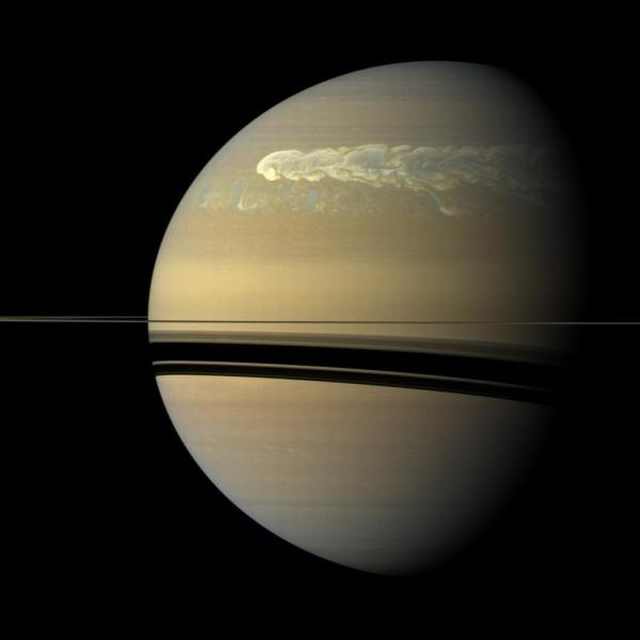 |
| Here's our sixth planet from the Sun, and most people's favorite, Saturn. The fascinating rings on Saturn are what make it a fan favorite. There are twelve rings total, nine are continuous and three are discontinuous, and the rings are composed mainly of ice particles, rocks, and dust. This photo, as seen from the Cassini spacecraft, shows a storm brewing over the northern hemisphere of Saturn. We really love the shadow of the rings, too! |
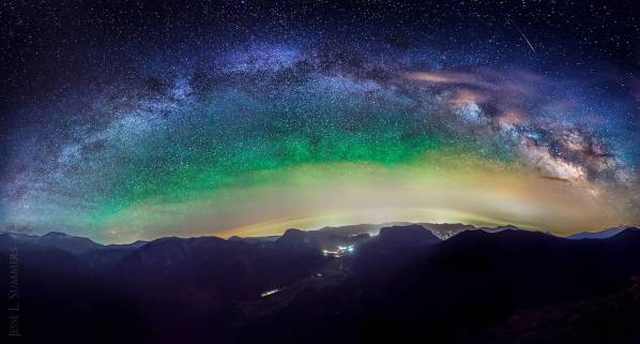 |
| Another breathtaking view of the Milky Way galaxy, this time as seen over the Rocky Mountains. In case you didn't know, the Milky Way galaxy is the one we reside in. Now, we can't get any full-view pictures of the Milky Way because we are inside of it (this would be like trying to photograph the outside of your house while you are standing inside of it) but we get views like this that show us the edge of our galaxy. |
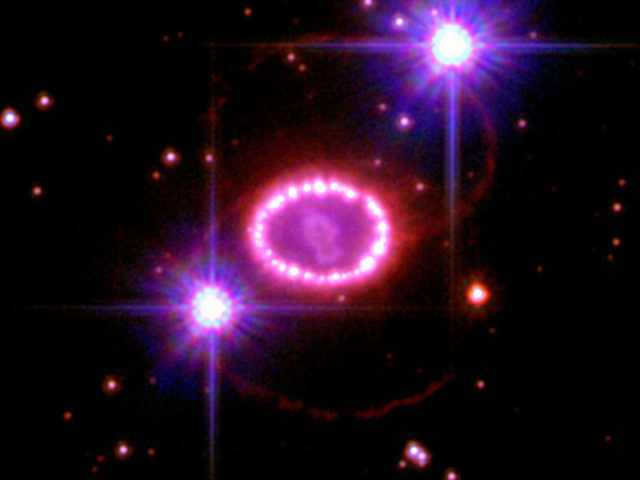 |
| A nova is the explosion of a dwarf star, and aptly enough, a supernova is an even more energetic explosion of a star. To put it concisely, a supernova is basically a star exploding in a giant nuclear reaction; think Hiroshima times about a million. Astronomers first identified this Supernova, 1987A, over twenty years ago and it's still exploding brilliantly in the sky today. |
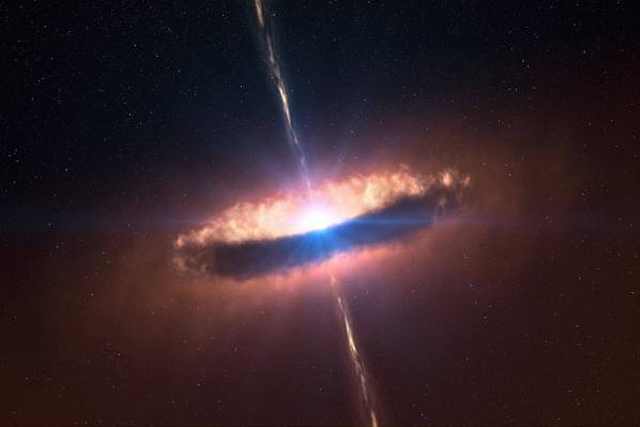 |
| This is a star that is several hundred times larger than our sun; the cloudy disc you see surrounding it is outflowing gas. Unlike the other images in the gallery, this one was actually created by a digital artist. But it is an extremely accurate representation of what a supermassive star would look like up close. |
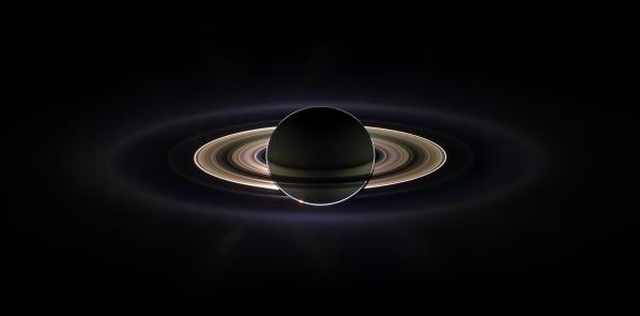 |
| One more amazing photograph of everyone's favorite planet: Saturn. Can you spot Earth in the background? See that little dot just outside of Saturn's rings, on the left side? That tiny little speck? That's Earth. Really puts things in perspective, huh? We love the way Saturn's rings are reflecting sunlight in this picture. |
 1:14:42
1:14:42
Documentary: How Did Our Universe Come From Nothing?
Can “nothing” truly become “something”? In this video, we’ll dig into this mind-bending question.

These Photos Have Amazed the World...
From the epic majesty of our galaxy to the pure, simple beauty of a tortoise interacting with a butterfly, these photos are wonderful.
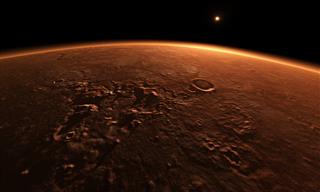
16 Fascinating Facts About the Red Planet
Let's have a look at what we already know about the red planet.

Life in Turkey’s Istanbul is Pretty Special – 15 Pictures
Istanbul in Turkey is a city of many wonderful contrasts as you will see in these striking pictures.
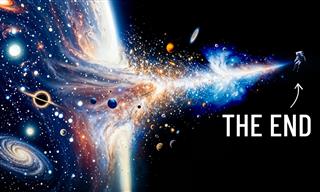 21:51
21:51
What Will the Universe Look Like in 10 Quintillion Years?
These questions take us beyond science into the realm of imagination, as we contemplate the ultimate fate of our Universe and everything within it.
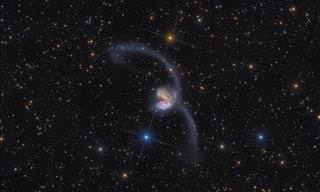
These Photos of Space Will Make You Feel Really Small!
The 2015 winners of the Insight Astronomy Photographer of the Year competition have just been announced, and their images are incredible...

18 of the Most Incredibly-Timed Photos You'll Ever See
These photos will leave you in awe of their timing. The visual impact they have is staggering. Take a look at these 18 images.

How I Would Love to Walk in New York of a Century Ago
These images of old New York, supplied by the Library of Congress, give us an idea of what life was like in the early 1900s in this city.
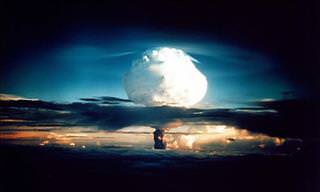
These Covert US Government Operations Will Shock You
The US government has conducted many covert operations over there years. There are 10 of the most shocking ever to be exposed.

13 Old-School Home Items That Defined Life Before 1980
Take a trip down memory lane and revisit some of these vintage home items.

INTERACTIVE: Click on the Old Photos to Bring Them Alive
Although we imagine the world prior the 1950s in terms of black and white, new colorization techniques have changed everything. Enjoy this interactive post.

Gene Hackman: A Look Into the Life of a Consummate Actor
The following biography chronicles Hackman’s journey from a modest upbringing and military service to Hollywood stardom, his personal life behind the scenes, and the enduring legacy he left after retirement.
 6:21
6:21
Do You Know What Goes Into the Average Marshmallow?
Marshmallows are one of the most beloved treats in the US. But do you know what they're actually made of and hoe they are produced?

Love Mythology? You'll Love These Informative Animations!
These informative TED-Ed videos delve into some of the world’s most popular myths and attempt to explain them in all their glory!
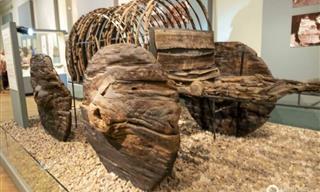
14 Fascinating Museum Treasures That Stole the Show
These 14 museum finds are truly impressive.

Instead of Plastic, These People Used Smart Alternatives
Check out 14 excellent examples of people and companies fighting the global plastic problem.

The 7 Most Popular Books Ever Sold
In this article, we set aside the Bible and focus on seven other books – from novels to reference works – that have achieved extraordinary global popularity.

11 Clever Contronyms - Same Word, Opposite Meanings
Have you ever heard of contronyms? Here’s a hint - these are words that contradict themselves.

25 Old Photos That Show How Different the World Used To Be
Check out this amazing collection of vintage pictures that show us how much the world around us has changed.

6 Facts You May Have Not Known About King Charles
Did you ever know Prince Charles also dabbles in art? And what about his musical skills? Let's get those royal facts.
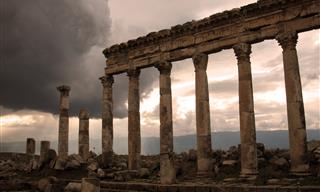
7 Interventions of Mother Nature That Altered History
We tend to forget how much power nature has over us. These are 7 times extreme weather conditions completely changed the course of history.

10 Quirky FACTOIDS About Music Everyone Will Love
These weird and wonderful facts about music will astound you!

I Had No Idea These Brand Names Are Actually Acronyms
There are loads of brand names out there that are actually acronyms, and here are some of the most surprising ones!

The Medieval Disease That’s Perplexing Science to This Day
Past epidemics have turned into a hot topic recently, but there is one disease that seems to be forgotten. What is the sweating sickness and how did it originate?

In the 1800s, They Thought We'd Be Living Like This Today?
The European artists who created the postcards below were asked to predict what life would be like in 2000.

Remember Mr. Rogers? He Left Us With Many Great Quotes
Fred Rogers was a beloved children's television star during his life, but he was also an incredibly insightful & smart man. Here are 20 of his greatest quotes.

The Astonishing Life and Philosophy of Ludwig Wittgenstein
It is the true story of Ludwig Wittgenstein, the man who sat in the same classroom as Adolf Hitler, became the protégé of the philosopher Bertrand Russell, and changed the face of 20th-century philosophy
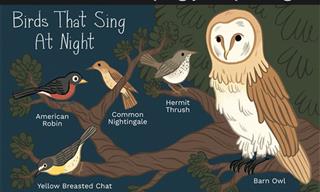
12 Practical Infographics You’ll Want to Save For Later
You’ll surely enjoy this collection of charts. It’s a treasure trove of knowledge about our health, nature, and human society.

10 Popular Foods That Were Discovered in Unusual Ways
This article takes a look at the unexpected origins of some famous food products.

10 of the Weirdest Things Discovered at Airport Security
Here is a collection of ten of the weirdest things that airport security officers have found when on the job.
 10:27
10:27
The Story of the Green Beret Who Went On a Saving Rampage
The unbelievable story of one man who went on a movie-like rampage to save his comrades in arms.

12 Beautiful Facts About the Charming Act of Kissing
Such interesting facts about the act of kissing...

You’ve Probably Been Mistaking These Foods for Each Other
In this article, we will look at a few food pairs that have commonly confused all of us.and help you tell the difference between them.

The Secrets behind Houdini's Greatest Tricks!
Have you ever wondered how Harry Houdini carried out his stunning feats? Well, if you have, wonder no more! All is revealed here!

10 Mysteries that have Shocked Human History
10 incredible mysteries we know very little about.
 3:25
3:25
Rescued from the Fighting Pits - Sam`s Story
The true soul of a dog is kind, no matter what they go through in life. Sam is a testament to that.

23 Unbelievable Facts That Show Our World’s Bizarre Side
These incredible facts will change how you see the world.

The Real Bonnie and Clyde: 7 Facts About the Outlaw Couple
Media depicts them as glamourous, fearless outlaws. But what was behind the myth of Bonnie and Clyde? These 7 lesser-known facts tell their story.
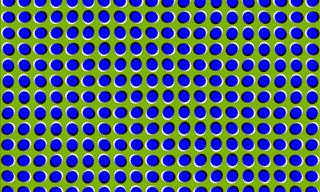
Get Lost in These 15 Surreal Optical Illusions!
After looking at these weird optical illusions you might never trust your eyes again.

6 Treasures Owners Unwittingly Used As Household Goods
Sometimes, a prized treasure is hiding right under the noses of unsuspecting citizens. Some precious antiques are even being put to good use as household items.

These Are the Most Overused Words in the English Language
Are you guilty of using these overused words in English? Find out!

18 Fun Facts You Likely Never Heard of Cutely Illustrated
Don't the cute exterior of these illustrations deceive you. This is a real treasure trove of fascinating facts about the world we live in

Welcome the Summer Season with These Beautiful Quotes
Welcome the balmy summer season with these beautiful warm-weather quotes.
 19:11
19:11
What's the Secret of Reigniting Desire in a Relationship?
The desire for erotic stimulation stands in contrast to the desire for a stable relationship. So how can we get past this. This witty TED talk informs us.
 2:29
2:29
CDs Become Magic Tools in This Mind-Bending Act
Watch this mind-bending magic act by Florian Sainvet in America's Got Talent.
 9:37
9:37
What Did the Future Mean to 1958 High Schoolers?
Peep into a high school debate from 1958 about the teenager's future. Are their arguments still relevant today?

15 Amazing Items of the Past People Found in Their Homes
The nooks and crannies of our homes may contain some really fascinating vintage items...
To enable your Ad-Free Subscription, please fill the fields below
Your subscription was successful, now you can enjoy an ad-free experience!! Note: To make sure you get no ads, please make sure to log in to your account. If you are logged in already, then refresh the page. The subscription can be cancelled at any time.


